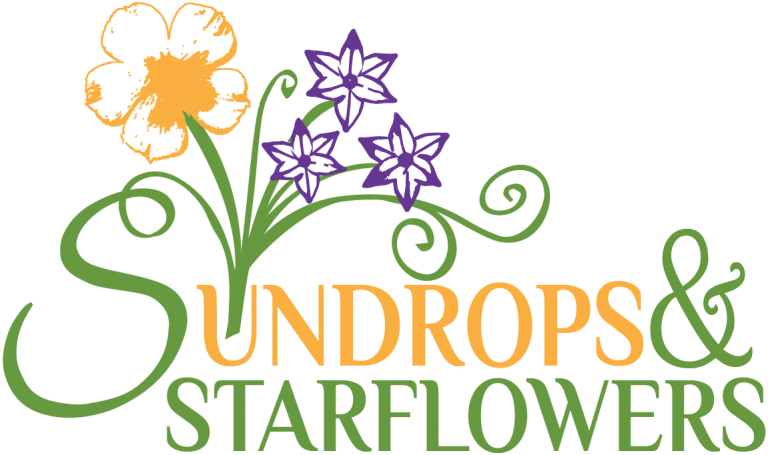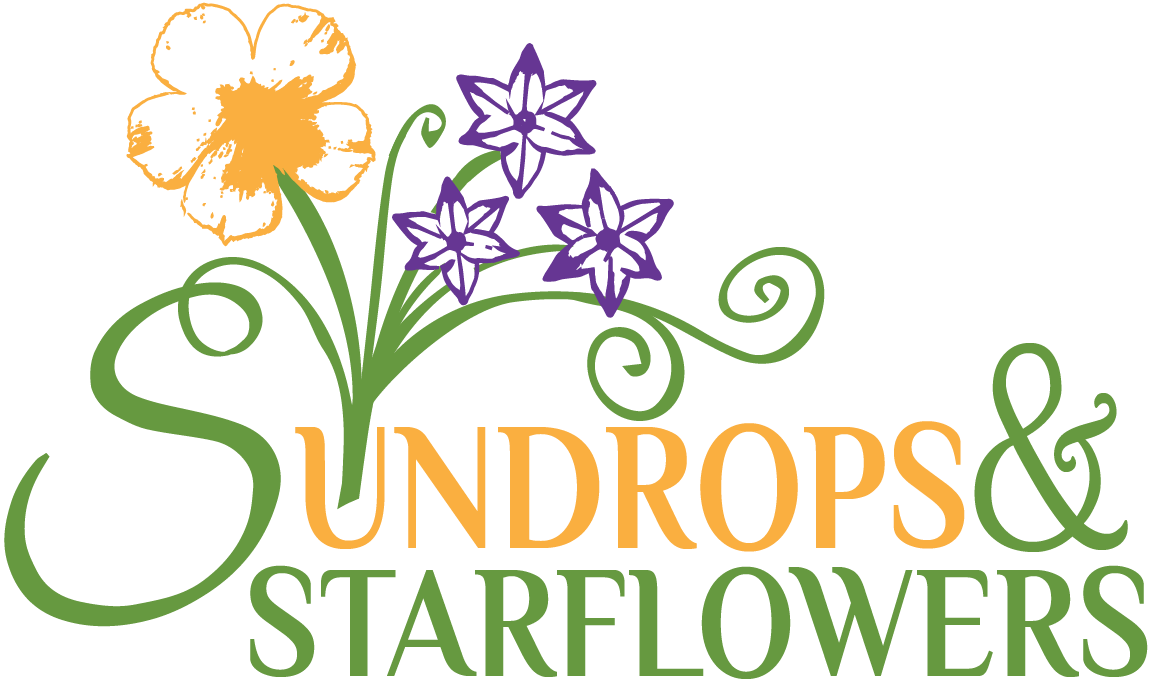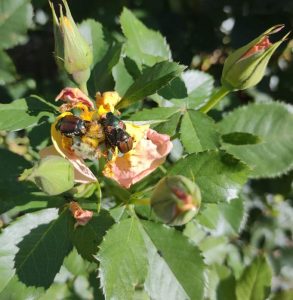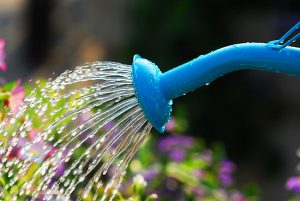Unfortunately, you are likely to have some uninvited guests in the yard as the summer progresses. There are certainly intruders in my garden! Birds and squirrels eating the apples, powdery mildew covering the peonies, and weevils destroying my roses– ugh!
I try to follow a protocol known as IPM (Integrated Pest Management). IPM seeks to solve pest problems while minimizing the risks to people and the environment. This means I try the least impactful option first, rather than immediately grabbing the chemicals. It does not mean I will not use chemicals of any type. IPM means trying a variety of organic and conventional pesticides and considering all aspects of chemical safety. This the basic IPM protocol:
1. Prevention. Healthy plants are less likely to attract pests and more likely to survive if they are attacked. Water and fertilize appropriately. Pruning keeps trees and shrubs healthy. Mowing on a higher setting is good for the vitality of the grass. Monitoring the health of my plants and addressing issues quickly is the best bet.
2. Identification. Sometimes this is easy: I can watch the rabbits eating my plants. Sometimes it’s less obvious: I had to look at dusk to find the rose weevils munching my rose buds. Proper identification is required! You can’t control a problem until you know what it is.
3. Control. This breaks down to three basic categories: barriers, repellants, and pesticides. Barriers. Bird netting is a barrier (but it isn’t all that reasonable on a 25-foot tall tree). I have a rabbit-proof fence around my vegetable garden to keep those pests from eating my green beans. Physical barriers are generally the safest and typically very effective when they can be used. Repellants. These products work to make the plant less desirable, usually with an unpleasant scent. I’ve tried to deter rabbits with blood meal, cayenne pepper, soap flakes, and synthetic fox urine with mixed successes. On the other hand, I was very successful deterring a raccoon from its latrine using chili powder. Repellants sometimes work and sometimes they don’t. Typically, they must to be applied frequently. They have a low overall environmental impact and are always worth a try. Pesticides. A pesticide is any product that kills pests. This category includes vole/mouse traps and chemical insecticides. Among pesticides there is still a range of environmental friendliness. For example, my favorite pesticide is a bucket of soapy water. It’s time consuming but I can hand pick bugs like weevils off of my plants and drop them in the soapy water where they die. When the population of bugs outnumber my time to pick them off by hand, I may advance to pyrethrin or neem, saving the “heavy guns” of more advanced insecticides for only when I can’t control the pest any other way.
For any pesticide, whether is it labeled “organic” or not, carefully read the label and follow the manufacturer’s instructions exactly. These products are only safe when used correctly and are only effective when used against the correct pest.
There is one more option to control that I must mention: ignore it. If you’ve identified that aphids are a problem, look closely to see if there are also lady beetle larvae on the plant. If you spot these larvae, you should just ignore the aphids as the ladybugs will manage them for you. If it’s near the end of the summer and some of your plants have powdery mildew, perhaps you should just cut them back for the year and forget about it.
Loop back to prevention and monitoring plant health continually!
Happy gardening!
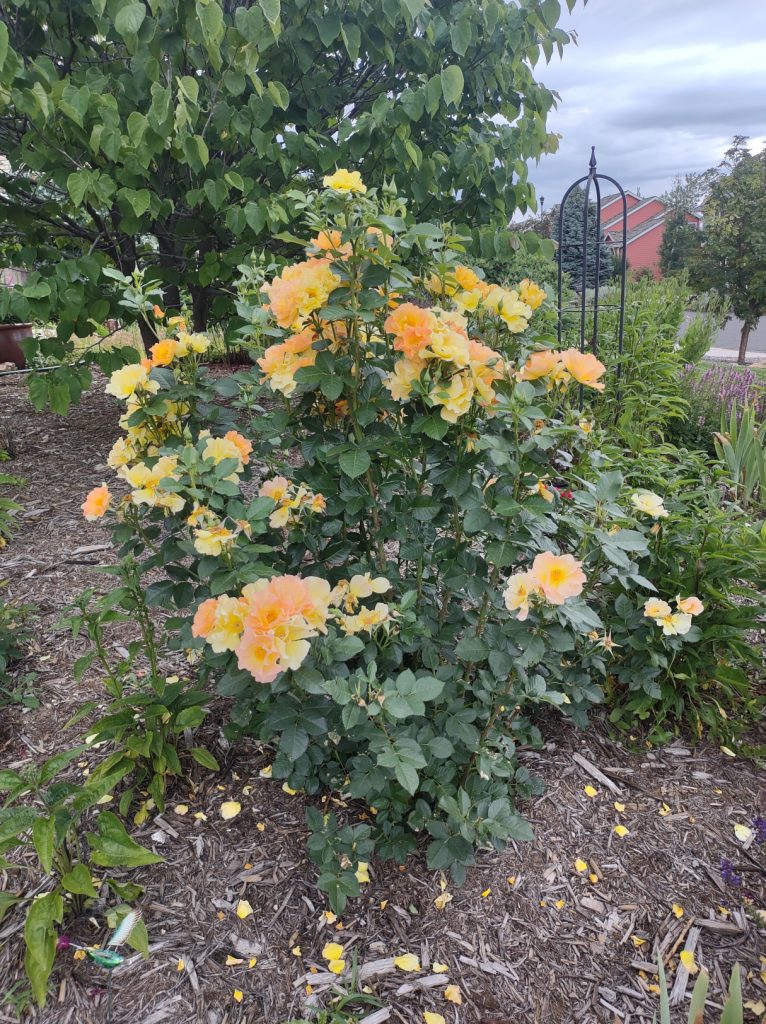
My Morden Sunrise Rose was looking beautiful! 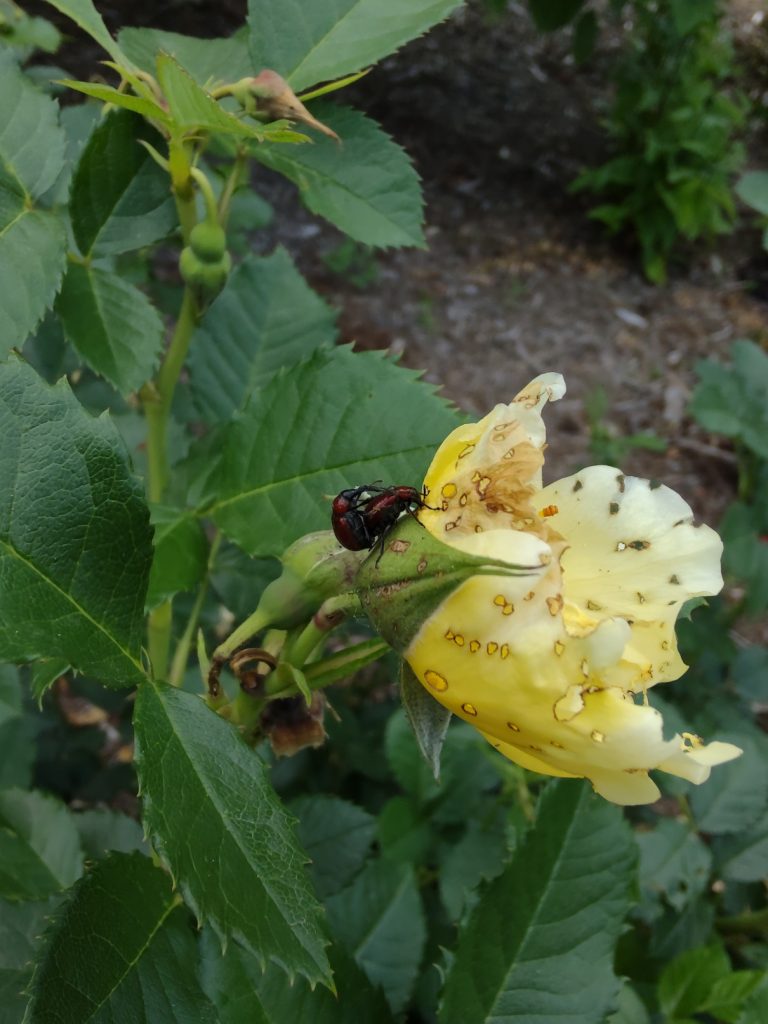
Until the weevils came, uninvited. 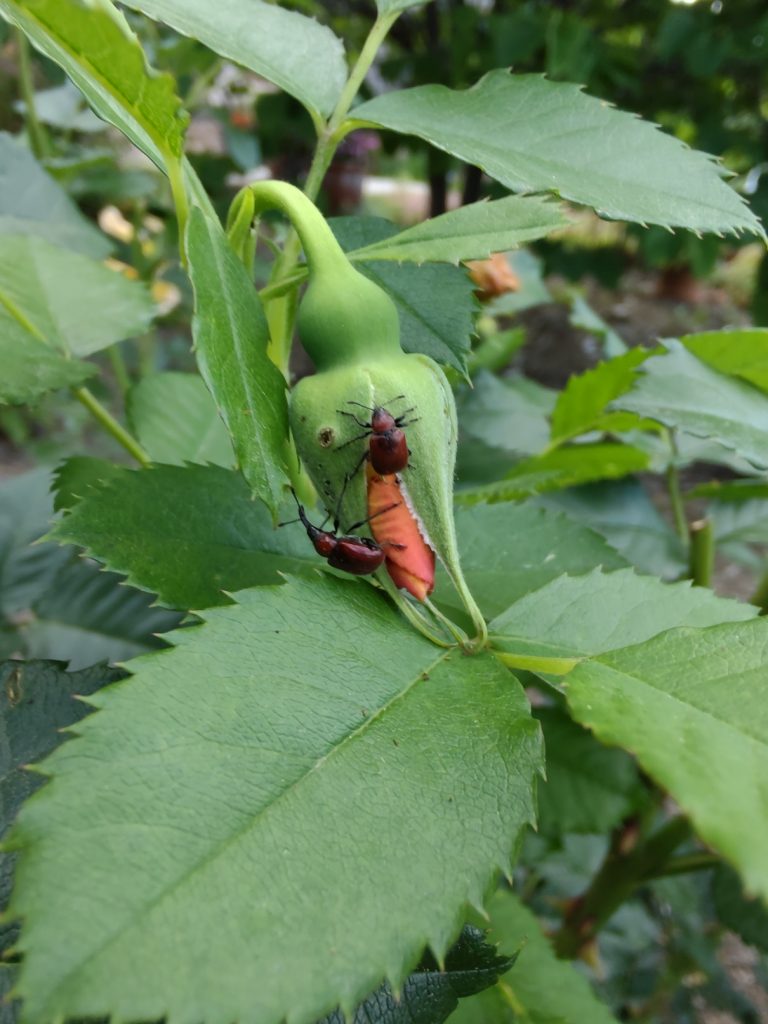
They feed on the buds before they even open. 🙁
